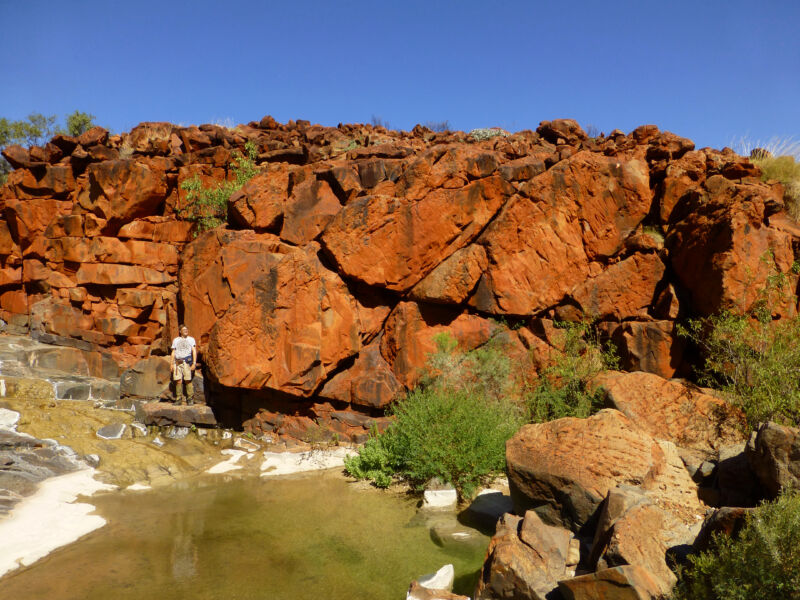
Enlarge / 2.7-billion-year-old basalt lava flows in the Pilbara Craton, now tilted about 45 degrees from horizontal. (credit: Jennifer Kasbohm )
Have tectonic plates changed speed over the last three billion years? The answer has far-reaching implications, as plate tectonics affected everything from the supply of vital nutrients for early life to the rise of oxygen. We know Earth’s interior was hotter early in its history, but did plates move faster because the hotter mantle was squishier, or did the hotter mantle contain less water, which helps mantle minerals flow, slowing plates down?
A new study, led by Dr. Jennifer Kasbohm of Yale, measured ancient magnetic fields and dated rocks from Western Australia to show that the “Pilbara Craton”—an early continent—moved at quite a clip around 2.7 billion years ago. While today’s fastest plate motion is around 12 cm (4.7 in) per year, the Pilbara Craton moved as much as 64 centimeters (25 inches) per year.
A rare remnant of early Earth
In the Archean eon, a time far closer to the formation of our Solar System than to today, basalt oozed over what would later be Western Australia in much the same way it does in Iceland and Hawaii today. Plate tectonics was still relatively new, and continents were in the early stages of emerging from what had largely been a water world. The air was devoid of oxygen, and the most advanced life came in the form of microbial communities that are preserved today in hummocky fossils known as “stromatolites.”
Read 29 remaining paragraphs | Comments
